Arway: Do Your Duty and Fear No One
An Interview with John Arway (Part 2)
Today, the biggest threat is no longer the simpler point source discharges, but the subtler yet abundant non-point sources, according to John Arway, former executive director of the Pennsylvania Fish and Boat Commission.
Non-Point Sources Are a Greater Challenge
“For large watersheds like the Susquehanna, we’re dealing with many more chemicals than we’ve ever dealt with before because we can now analyze them,” Arway explains. “When I first started, I never imagined we would have the ability to analyze chemicals down to parts per quadrillion or lower in terms of their detectability in water – but we can now.”
Unfortunately, the effects of many of these chemicals are still not fully understood. Unlike point sources, which kill fish outright, trace chemicals can have a variety of negative consequences, such as causing endocrine system disruption and cancer in fish. Stopping or limiting these sources is not as simple as shutting down a point source.
“You can’t just look upstream and downstream and immediately see the effects like you can with a pipe,” Arway explains. “That’s the challenge for the future, looking at landscape scale impacts like herbicide and pesticides applications on farmland.”
However, Arway is optimistic for the future health of the state and countries waterways.
“We have a lot more scientists out there collecting data from our forests and our rivers than when I started – we have a lot more people watching,” he says. “But it’s important that we continue to talk to and share this information with each other. If we don’t talk with each other, we won’t learn from each other.”
Technology Is One Solution to Provide Hope; Communication Is Another
Fortunately, Arway notes, technology has made it easier to share this information and communicate across channels, whether that means a scientist in Virginia working on a river issue with similar implications to someone working on a river issue in Pennsylvania, or, as Arway himself experienced, opportunities to communicate with scientists from as far away as Poland and Hungary.
Yet, it is more than the growth of the scientific community that Arway is optimistic about. He feels equally optimistic about the willingness and ability of the public to educate themselves on environmental issues. Previous generations were more apt to simply accept things as they are, Arway says, but today people are more likely to ask questions and, most importantly, to educate themselves than they were previously.
“It’s incumbent upon those who are concerned about environmental issues to become educated about the science and to ask questions, to challenge and push ourselves to advance the science into the future,” Arway encourages.
Advice for Future Advocates
Arway, in passing the torch to future generations of scientists, environmentalists, and advocates likes to offer two more pieces of advice:
First, is to always follow your passion. Secondly, he likes to share a piece of advice he was given by a former director he served under: do your duty and fear no one.
“That might seem ‘in your face’ but it’s not,” Arway says. “It means follow your passion and don’t be afraid to do what you believe you have to do. Challenge the politicians and challenge the scientists to better understand the problem and to come up with a solution.”
After more than 40 years following his passion, Arway leaves behind a legacy of cleaner, safer water stretching for thousands of miles across the state and has helped to pave the way for future scientists, conservations, and sportsmen to do their part in both protecting and improving our waterways.
We’d like to thank Arway for his many years of service and all that he’s done for Pennsylvania’s waterways. In our next blog we will interview Arway’s successor, Tim Schaeffer, to find out how he will carry on John’s legacy and make his own waves at the Fish and Boat Commission.
- In “The Restorers,” the Susquehanna River Takes on a Life of its Own - June 12, 2019
- Schaeffer: Securing Financial Stability for the Commission Is Key - April 15, 2019
- Arway: Do Your Duty and Fear No One - April 2, 2019



